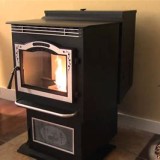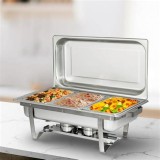How to Fix a Warm Fridge: Essential Aspects
A malfunctioning refrigerator is more than just an inconvenience; it can ruin your groceries and pose health risks. When your fridge starts to warm up, it's crucial to address the issue promptly. This article will explore the essential aspects of troubleshooting and fixing a warm fridge, providing you with a step-by-step guide to restore its optimal functionality.
Identifying the Root Cause
The first step in fixing a warm fridge is to identify the underlying cause. Common issues include:
- Condenser Coils: Dirty or clogged condenser coils can restrict airflow, causing the fridge to overheat.
- Thermostat Malfunction: A faulty thermostat may not properly regulate the fridge's temperature.
- Faulty Compressor: The compressor is responsible for circulating the refrigerant, and its failure can lead to a warm fridge.
- Door Seal Problems: Worn or damaged door seals can allow warm air to leak into the fridge, compromising its cooling efficiency.
- Refrigerant Leaks: A leak in the refrigerant line can reduce the cooling capacity of the fridge, resulting in higher temperatures.
Troubleshooting and Repair
Once you've identified the root cause, it's time to troubleshoot and repair the issue:
- Cleaning Condenser Coils: Unplug the fridge and remove the back panel to access the coils. Use a brush or vacuum cleaner to remove any dirt or debris.
- Testing the Thermostat: Use a multimeter to measure the continuity of the thermostat. If there's no continuity, replace the thermostat.
- Checking the Compressor: Listen for the compressor running. If it's not running, check the power supply and replace the compressor if necessary.
- Inspecting Door Seals: Look for any tears or gaps in the door seals. Replace any damaged seals with new ones.
- Locating Refrigerant Leaks: Use a leak detector to identify any refrigerant leaks. Contact a qualified technician to repair the leak and recharge the refrigerant.
Additional Tips
Beyond troubleshooting, consider the following additional tips:
- Avoid Overcrowding: Don't pack the fridge to capacity. This restricts airflow and reduces cooling efficiency.
- Use the Correct Temperature Setting: Set the fridge to 38-40 degrees Fahrenheit (3-4 degrees Celsius).
- Regular Maintenance: Clean the fridge regularly, including the condenser coils and gaskets. This will prevent future problems.
Conclusion
Repairing a warm fridge can be a challenging task, but by understanding the essential aspects and following the steps outlined in this article, you can restore its optimal functionality. Remember, if you encounter any complex issues that require specialized knowledge, it's best to consult a qualified refrigerator repair technician.

Solved Refrigerator Is Warm But Freezer Cold Moore Appliance

How To Investigate And Fix A Fridge That Is Too Warm

Freezer Ice Cold But Fridge Warm Solved Frigidaire Kenmore Refridgerator Fix

Ge Refrigerator Warm But Freezer Cold Same Day Appliance Repair

Refrigerator Not Working Troubleshooting Repair

Why Is Your Refrigerator Warm Universal Appliance Repair

Freezer Is Cold But Refrigerator Warm How To Fix The Problem

Why Is My Samsung Refrigerator Warm But Freezer Cold Northeast Appliance Service

Freezer Chill Fridge Warm Side By Refridgerator Diy Fix

Refrigerator Not Cooling Fix Problems Diy Family Handyman








